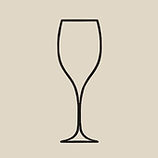Côte des Bar
- Plop Champagne

- Oct 15, 2023
- 3 min read
Champagne has its two largest and most famous cities which are Reims and Épernay. But beyond them and their countless surrounding villages, we have a little-known region, which is also part of Champagne. 150km from Reims, we have the Côte des Bar region, which is divided between Bar sur Seine and Bar sur Aube (each around a river, Seine and Aube).
This is a region with an interesting history: when the Champagne appellation was established, there was a dispute between producers in the Marne and Aube regions. This dispute began in 1887, and only in 1908 was the decision declared. Aube was left out. They fought for a long time afterwards, only in 1927, to win the right to be part of this AOC (controlled origin appeal).
As a result, they were left out of many things, such as échelle des cru. This name may not be familiar, right? But if I say Grand Cru and Premier Cru, you wine lovers must have heard it several times. Well, this nomenclature created in 1911 came to determine the most noble, and therefore most expensive, plots in the region. Nowadays this is no longer used to regularize and standardize grape prices as it used to be, but it remains an important nomenclature when it comes to quality. However, as Côte des Bar was left out, none of its villages have these names. But this is far from meaning that they do not have such quality.
In this region, the grape variety that dominates is Pinot Noir. A Pinot with more structure, richer and rounder. All thanks to the terroir, which in addition to latitude and climate has something unique, the Kimmeridgian soil: marl (clay mixed with limestone), from 150 million years ago.
And on this last visit to Champagne, I was able to spend wonderful days in this region, and I'm going to bring here a little about three beloved producers that I was able to visit there.
Drappier
I had the honor of being welcomed by Jeremy and Hugo Drappier, owner of Maison Drappier. On a unique visit to the winery to learn a little about the house's unique expedition liqueur: a wine with 15 to 25 years of aging, preserved in oak barrels and with a very high level of sugar, which is added in small quantities to the dosage. end of the champagnes, gives the brand's DNA - and don't think it's sweet, because it isn't! Proportion is everything!

The house's new acquisition: wooden eggs for aging wines! It's common to see concrete or clay eggs, but now they've brought this innovation!
For tasting: an incredible line, with many champagnes, as well as tests by winemakers… My favorite:
Blanc de Quatre Blancs: the four white grape varieties allowed in Champagne (Chardonnay, Petit Meslier, Arbanne and Pinot Blanc - known in the region as Blanc Vrai)
Tierry Massin
I had the privilege of meeting Violaine, producer of this champagne, in 2021, at Anima Vinum! I told her that next time we would meet in the vineyards! And said and done: what a wonderful day!!!
I was able to taste the base wines from the house's new oak barrels, as well as the red Coteaux Champenois.

Our tasting was complete, with 8 labels (some of them you can find here in Brazil through Anima). The highlight was:
Solera Blanc de Noir, with wines from 2003 to 2013, minimum 8 years in bottle and Extra Brut (3.3g/L).
Then a beautiful visit to the vineyards. They are HVE, producers with high environmental value, who respect and value the terroir, with minimal interventions!
Moutard
The owner Alex Moutard welcomed me and upon arrival he said: “do you have time?” Clear! The afternoon was all his! And that's when we had a wonderful day! A whole afternoon: in the cellars, we tasted - all - the base wines in the barrels, including the same grapes from different vineyards (old vines and young vines). We took the car and visited the Moutard vineyards, the highest ones and we could see the differences in slope, light and pruning.

We went to production, degorgement which was in activity, bottling. As he was leaving, he picked up a bottle still without a label: the new 2012 6-cepage cuvée, which will still be released on the market in approximately 3 months. Grapes: Chardonnay, Pinot Noir, Meunier, Petit Meslier, Arbanne and Pinot Blanc.
We went for the incredible tasting, 100% nature! The highlights:
-100% Petit Meslier (I love it) 2017! Also from old vines! More balanced, refreshing acidity, with notes of lime, but creamy and with good persistence.
- 6 cepages 2012 (arriving on the market soon). I took the 2010 not long ago, and then I was able to take the 11 and 12. Nice comparison! 12 is perhaps the one with the greatest guard potential. With a higher temperature (14 degrees) it was even more incredible!
.jpg)




Comments